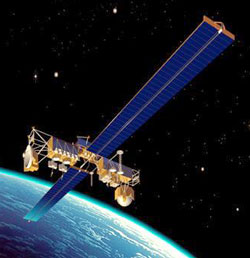 |
Wednesday, December 06, 2006
Reports maps future Florida growth
By Aaron Deslatte
TALLAHASSEE – Imagine a sea of pavement devoid of green space spreading contiguously from Fort Myers to West Palm Beach. A landscape of endless urban jungle cramming an extra 9 million people into subdivisions clustered from Tampa through Daytona Beach.
Developers gobbling up farmland and green space at a rate that more than doubles the suburban and exurban landscape.
It’s a picture of Florida 50 years into the future, when a provocative new report indicates the state will be home to nearly 36 million people.
Two Florida developers and environmental groups on Wednesday released the dire projection made by the University of Florida in the hope of sparking discussion about how to handle the additional 17.9 million people planners expect to move in by 2060.
Unlike previous population estimates, the new report by the UF GeoPlan Center used current growth patterns to map where development is likely to occur to accommodate a doubling of Florida’s population.
The final product shows the entirety of Central, Southwest, and South Florida completely shaded in red for high-density development, and the Panhandle not far behind.
"The patterns are very stark," said Charles Pattison, executive director of 1000 Friends of Florida, which co-produced the report.
"You can see a result that shows extensive urbanization that has major implications for our quality of life, the economy of the state and obviously environmental features."
The UF GeoPlan Center used 2005 population growth trends and the urban land used for each new person in every county and projected it forward 55 years.
The report indicates:
* 7 million acres of additional land would have to be developed to handle the growth, more than twice the land currently considered urban today.
* 2.7 million acres of farm and agricultural land would be lost, as farmers sell off their fields to make way for planned communities, roads and commercial or industrial centers. More than 2 million acres of current conservation lands, roughly one acre of every five protected today, would be within a mile of urban development, "isolating some conservation holdings in a sea of urbanization," the report states.
The News-Press
Copyright 2006, The News-Press
By Aaron Deslatte
TALLAHASSEE – Imagine a sea of pavement devoid of green space spreading contiguously from Fort Myers to West Palm Beach. A landscape of endless urban jungle cramming an extra 9 million people into subdivisions clustered from Tampa through Daytona Beach.
Developers gobbling up farmland and green space at a rate that more than doubles the suburban and exurban landscape.
It’s a picture of Florida 50 years into the future, when a provocative new report indicates the state will be home to nearly 36 million people.
Two Florida developers and environmental groups on Wednesday released the dire projection made by the University of Florida in the hope of sparking discussion about how to handle the additional 17.9 million people planners expect to move in by 2060.
Unlike previous population estimates, the new report by the UF GeoPlan Center used current growth patterns to map where development is likely to occur to accommodate a doubling of Florida’s population.
The final product shows the entirety of Central, Southwest, and South Florida completely shaded in red for high-density development, and the Panhandle not far behind.
"The patterns are very stark," said Charles Pattison, executive director of 1000 Friends of Florida, which co-produced the report.
"You can see a result that shows extensive urbanization that has major implications for our quality of life, the economy of the state and obviously environmental features."
The UF GeoPlan Center used 2005 population growth trends and the urban land used for each new person in every county and projected it forward 55 years.
The report indicates:
* 7 million acres of additional land would have to be developed to handle the growth, more than twice the land currently considered urban today.
* 2.7 million acres of farm and agricultural land would be lost, as farmers sell off their fields to make way for planned communities, roads and commercial or industrial centers. More than 2 million acres of current conservation lands, roughly one acre of every five protected today, would be within a mile of urban development, "isolating some conservation holdings in a sea of urbanization," the report states.
The News-Press
Copyright 2006, The News-Press

